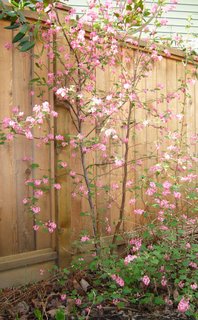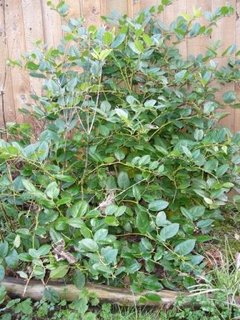pathways
Taking a stroll around the backyard, I've discovered a narrow path in the grass. I suspect its the raccoons who've trod it.
It's the end of the March and I am refusing to mow the lawn until the calendar says April. But with all the rain and the last couple of days of warmer temperatures, the grass is bursting out.
I've considered the big cedar hedge a part of the "wildways" that would allow wildlife to find their way amongst the houses and the school behind us without being seen. I know the raccoons hang out inside the hedge. One afternoon last month while I was digging in the vegetable garden I heard growling. I thought it might be dog on the other side, the school side, of the hedge. After some minute, out popped two raccoons, clearly in the throws of mating season. Giving me a scowl, they continued on in the grass towards the back, climbed the old chestnut tree and scooted across to my neighbour Jim's cedar hedge that extends from the chestnut tree.
But the path in the grass means that in quieter times they prefer the lawn to the hedge. I don't blame them either. The hedge is dense and cedar makes my skin itch.
One troubling item is that the path goes around the compost bin. We must take care to secure the scraps inside the bin.
It's the end of the March and I am refusing to mow the lawn until the calendar says April. But with all the rain and the last couple of days of warmer temperatures, the grass is bursting out.
I've considered the big cedar hedge a part of the "wildways" that would allow wildlife to find their way amongst the houses and the school behind us without being seen. I know the raccoons hang out inside the hedge. One afternoon last month while I was digging in the vegetable garden I heard growling. I thought it might be dog on the other side, the school side, of the hedge. After some minute, out popped two raccoons, clearly in the throws of mating season. Giving me a scowl, they continued on in the grass towards the back, climbed the old chestnut tree and scooted across to my neighbour Jim's cedar hedge that extends from the chestnut tree.
But the path in the grass means that in quieter times they prefer the lawn to the hedge. I don't blame them either. The hedge is dense and cedar makes my skin itch.
One troubling item is that the path goes around the compost bin. We must take care to secure the scraps inside the bin.







